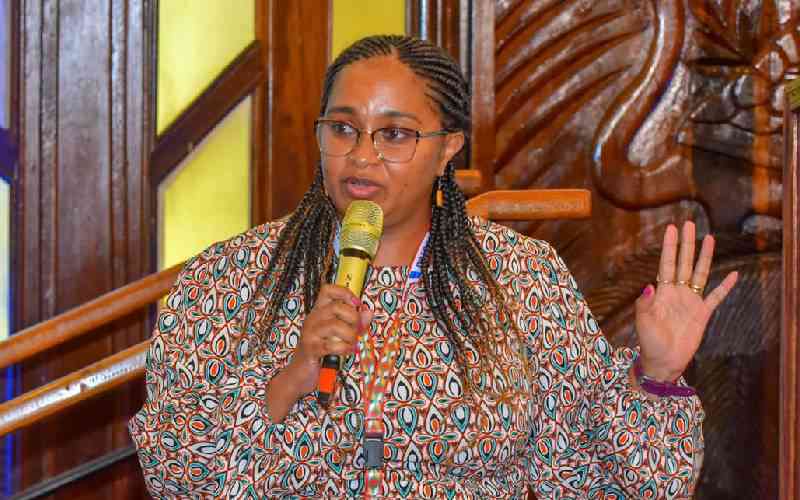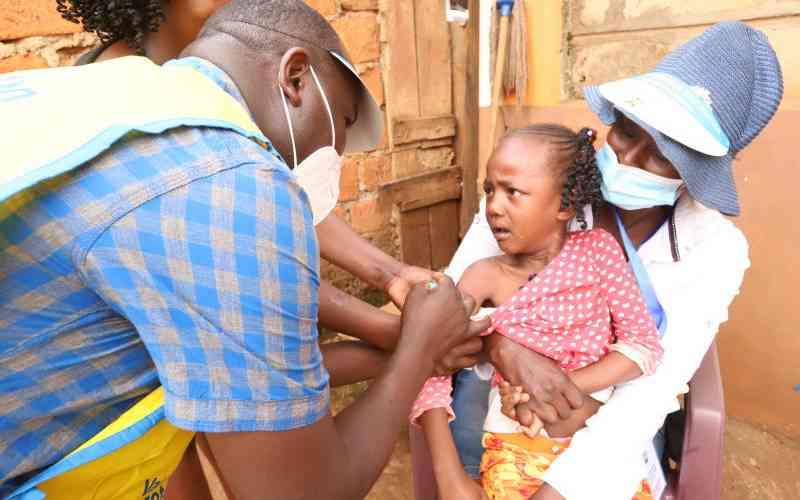
Joseph Mwandenge's footsteps echoed through the sun-dappled, lush mangroves lining the edges of the River Sabaki, a stark contrast to the familiar mud flats he had known for years.
The soft creak of the boardwalk upon bare feet is not just any ordinary sound. It is a new sensation and part of the changes taking shape within the delicate ecosystem where river Sabaki nears its final journey, winding through the mangrove forests, before embracing the Indian Ocean.
The new structure boardwalk stretching above the spongy, brackish ground, is not just a walkway, but a new lifeline for the critical ecosystem.
“Sabaki estuary is opening up. Visitors can now feel the beauty of this delicate ecosystem unlike before when the access was a challenge. The construction of a boardwalk is now only opening up this site but also creating opportunities for us as local communities to undertake eco-tourism activities and enhance conservation,” Mwandenge says.
Sabaki River estuary is one of the 68 key biodiversity areas in the country located on the tail end of the Athi-Galana -Sabaki river basin. The unique ecosystem comprises sandbanks, mudflats, dunes, freshwater pools, marshes and mangroves.
It is an important habitat for resident and migratory shorebirds and a home to over 240 bird species. The ecosystem is also an important nursery ground for crustaceans and fish, while its sandy shores on both sides are breeding grounds for turtles. Different species of mangroves line their mudflats. Crocodiles, hippos, and antelopes also live in the area
Francis Kagema, Nature Kenya’s Coastal coordinator, said Sabaki provides a suitable habitat to a variety of organisms that constitute the biodiversity of the estuary.
“This biodiversity, if left alone, can thrive well but there are activities that interfere with the ecological processes The risk of degradation is real and has already started showing in overfishing and mangrove harvesting,” Kagema said.
But as Athi River springs up from Gatimaiyo forest in Kiambu county, flowing down and changing its name to Galana and finally Sabaki River along the 77,000 square-kilometer course, the river gets polluted by solid and liquid effluent.
It also faces challenges around the unique estuary where land grabbing is becoming a major concern, coupled with other illegal activities including harvesting of the mangrove poles, sand harvesting, and fishing with illegal gear.
To stem these growing challenges in Sabaki, Mwandenge and his group members which he chairs under a community conservation group known as Sabaki River Conservation Development Organisation have been engaging in conservation activities along the estuary. The conservation group is one of the Site Support groups supported by Nature Kenya within Key Biodiversity areas across the country.
Often, Mwandenge and his teammates undertake conservation awareness, outreaches, beach cleanups, and monitoring of bird species within the delicate ecosystem.
The challenges, according to environmental experts, impact water quality, biodiversity, and vegetation, disrupting the estuary’s ecosystem.
While the conservation efforts are tasking and require incentives for the group to undertake activities sustainably, a project being implemented by Nature Kenya through the United Nations Environment Programme (UNEP) is slowly giving a lifeline to the Sabaki estuary. The project is being implemented through UNEP’s Western Indian Ocean Strategic Action Programme.
The implementation has delivered facilities including the construction of the boardwalk, bird photography hide, and picnic banda.
“This project came in at a time when the negative effects were becoming more rampant and stakeholders were deliberating on the next steps to undertake to save the estuary. This project aims to sustainably manage the estuarine ecosystem,” Kagema says.
Already, Sammy Kenga, a fisherman who is also a member of the community conservation group says there has been an influx of visitors to the site, and this will generate revenue to sustain conservation activities within the delicate ecosystem.
“Besides an influx of visitors, this boardwalk has also helped in combating cases of land grabbing, cases which are becoming very rampant within areas around the beach,” Kenga says.
For Elina Charo, who chairs a group of Sabaki Women Widow Group which is part of the larger Sabaki conservation group, the project has created opportunities for women conservationists to earn a living besides proceeds from selling mangrove seedlings.
“We are now seeing opportunities of opening curio shops and eateries around this place to tap extra income besides tour guiding. Sabaki River estuary has always been a hidden gem but opening this place up for ecotourism activities is beneficial to us as a community,” Elina says.
The construction of a boardwalk in Sabaki, according to conservation stakeholders, will also bar illegal activities within the ecosystem that is now becoming prone to land grabbing.
Kilifi County Director for Climate Change and Forestry Kanundu Ngumbao admits that while there has been an increase in the number of land-grabbing cases in areas bordering the beaches and water bodies at the Coast, projects that give local communities revenue to boost monitoring help in combating the cases while also conserving the fragile ecosystem.
“Lately, there has been a huge appetite for land within the Coast. Land-grabbers often target such idle land, but when communities actively engage in conservation and monitoring the activities within the area, it becomes easy to bar land-grabbers. This is the case with the Sabaki estuary,” Ngumbao says.
Jilore Forest manager William Ochi says that community participation in the project has been vital in achieving forest security, monitoring, and restoration targets.
"When communities are involved, they realize the importance of the ecosystem not only for biodiversity protection but also for improvement of their livelihoods. In Sabaki, the communities are the ambassadors of the vital ecosystem and have been monitoring any illegal activities,” Ochi says.





